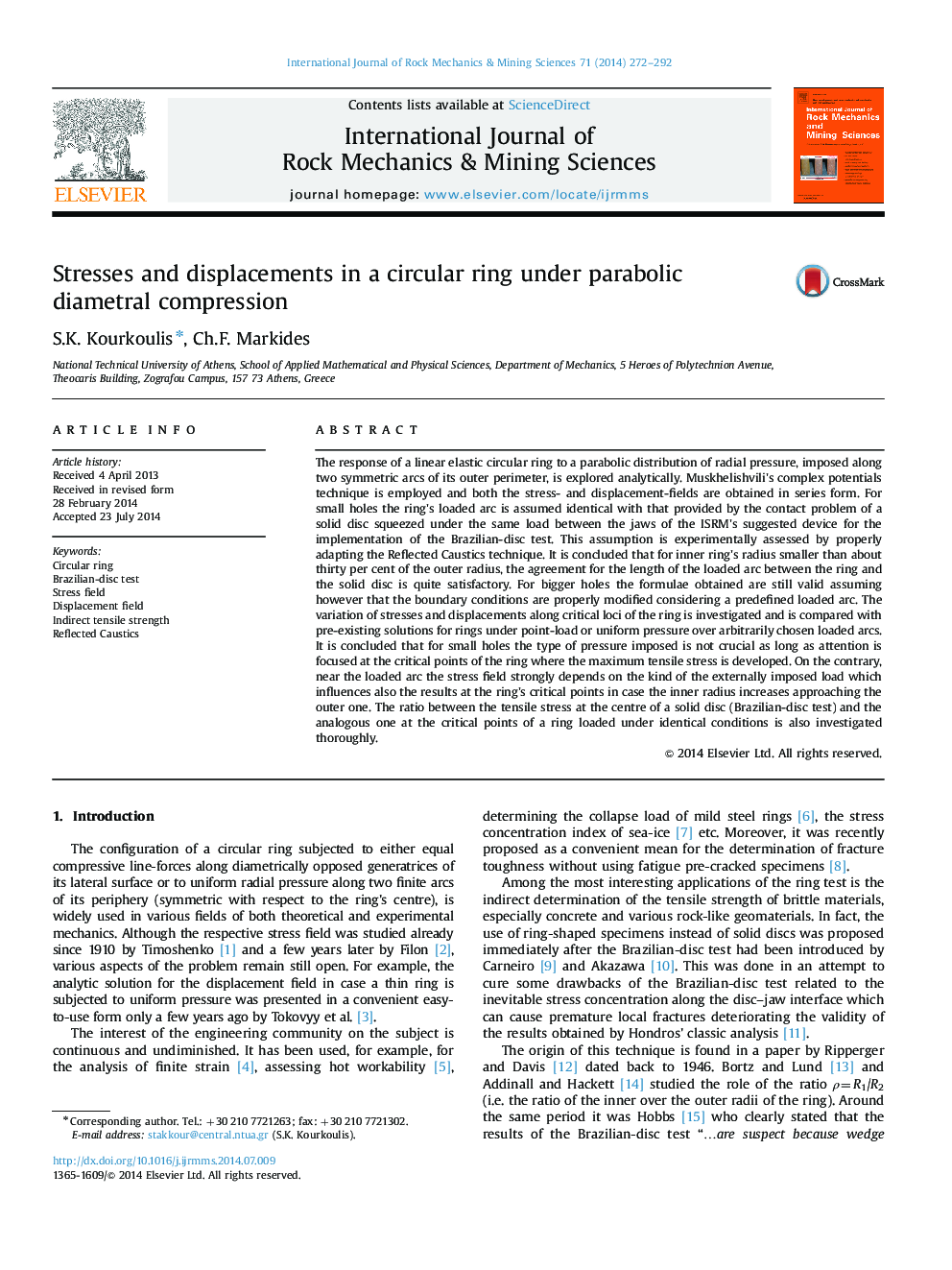| Article ID | Journal | Published Year | Pages | File Type |
|---|---|---|---|---|
| 7206717 | International Journal of Rock Mechanics and Mining Sciences | 2014 | 21 Pages |
Abstract
The response of a linear elastic circular ring to a parabolic distribution of radial pressure, imposed along two symmetric arcs of its outer perimeter, is explored analytically. Muskhelishvili׳s complex potentials technique is employed and both the stress- and displacement-fields are obtained in series form. For small holes the ring׳s loaded arc is assumed identical with that provided by the contact problem of a solid disc squeezed under the same load between the jaws of the ISRM׳s suggested device for the implementation of the Brazilian-disc test. This assumption is experimentally assessed by properly adapting the Reflected Caustics technique. It is concluded that for inner ring׳s radius smaller than about thirty per cent of the outer radius, the agreement for the length of the loaded arc between the ring and the solid disc is quite satisfactory. For bigger holes the formulae obtained are still valid assuming however that the boundary conditions are properly modified considering a predefined loaded arc. The variation of stresses and displacements along critical loci of the ring is investigated and is compared with pre-existing solutions for rings under point-load or uniform pressure over arbitrarily chosen loaded arcs. It is concluded that for small holes the type of pressure imposed is not crucial as long as attention is focused at the critical points of the ring where the maximum tensile stress is developed. On the contrary, near the loaded arc the stress field strongly depends on the kind of the externally imposed load which influences also the results at the ring׳s critical points in case the inner radius increases approaching the outer one. The ratio between the tensile stress at the centre of a solid disc (Brazilian-disc test) and the analogous one at the critical points of a ring loaded under identical conditions is also investigated thoroughly.
Related Topics
Physical Sciences and Engineering
Earth and Planetary Sciences
Geotechnical Engineering and Engineering Geology
Authors
S.K. Kourkoulis, Ch.F. Markides,
